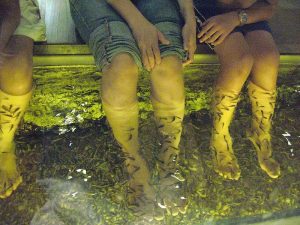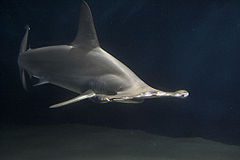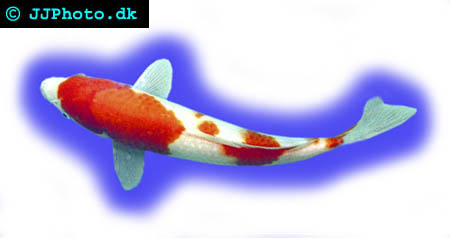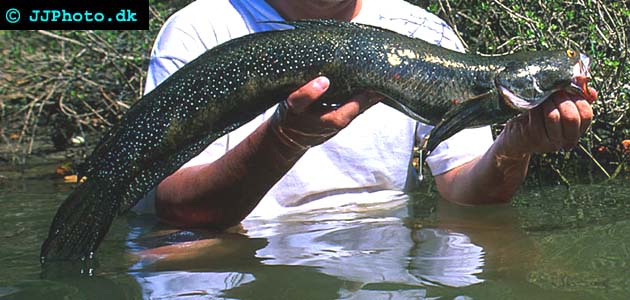Category Archives: Law & Law Enforcement
A New New York Bill May Ban Flesh Eating Fish Pedicures
The controversial use of live fish to chew away dead skin in pedicures may be banned in New York State for health and safety issues which have been proposed in a new bill.
The procedure in question was actually developed in Turkey, as a way to take care of a variety of ailments of the skin, such as psoriasis, consists of the feet being plunked into a tank of water which contains two different kinds of small fish. These rather hungry fish then proceed to eat away dead skin while leaving the healthy skin alone.
These “Fish Pedicures” are illegal in at least 14 different states, comments Senator Jeff Klein, of the Bronx and Westchester, who originally proposed the ban. The basis of the ban rests on the concern that fungal infections may be passed by unsanitized fish in unclean water. Of course the animal rights groups have jumped on the band wagon, pushing to outlaw the use of fish in pedicures as it is inhumane.
Robin Ross, the president of the New York Podiatic Medical Association, had this to say during a telephone interview: “I do not recommend it to anyone who has any diabetes or any immuno-compromised condition such as AIDS or cancer, because of the risk of infection. The fish are defecating and urinating in that water and you’re sticking your feet in it.” ”
The New York Department of State has gone on the record, saying that it is not aware of any of the 20,000 plus licensed nail salons engaging in such an activity. Apparently it is only being done on the down low, in backrooms of New York City.
PETA Lobbying for Criminal Charges to be Filed in Sea World Attack

PETA is lobbying for Sea World to be held criminally responsible for the death of Dawn Brancheau. Since that fateful day, PETA has been launching numerous campaigns against Sea World and their operational procedures.
Their first step was to publicly protest outside the theme park’s gates and now they are upping the ante.
PETA officials have been lobbying for the criminal charges, claiming that the attack on Brancheau, from a legal standpoint, is involuntary manslaughter.
“We think that is important for the attorney general to step in, investigate and prosecute this case because otherwise it is only a matter of time before another death or serious injury occurs,” explained PETA’s attorney, Jeff Kerr.
PETA’s case is clearly stated in a huge letter, address to Bill McCollum, the acting Attorney General.
PETA has said that because the officials of Sea World knew that killer whales were dangerous, and the whale which caused Brancheau’s demise was particularly dangerous, that Seaworld – which allowed employees to interact with these creatures – was in fact criminally negligent.
“Working in a dangerous job should not mean that you are exposed on a daily basis to being killed,” Kerr explained.
Of course, the officials at Sea World have a completely different view of the situation, explaining, “The allegations made by PETA today are as baseless … In our experience, both OCSO and the State Attorney conduct their work thoroughly and professionally. PETA’s letter appears to be another example of an organization more interested in media attention than assisting animals in need.”
While it was a terrible tragedy, one has to wonder, is it Sea Worlds’ fault? There is always danger when dealing with wild animals.. But could further steps have been taken?
Experts Backing Law Which Bans Shark Fishing
Conservationists and researchers are lashing out after the 11th fish was killed in BDA waters in the past week.
Are sharks dangerous man eating monsters, an excellent source for protein, or just another example of humanity being cruel and exploiting the oceans?
An 11 foot tiger shark being hacked to bits on a dock in Somerset this week really got the juices flowing in a lot of people.
The children seemed to be at ease, eagerly awaiting their turn to have their photo taken with the beast, however some other concerned citizens have said that the endangered animal had simply been killed for the sport of it.
The owner of the SCUBA firm Blue Water Diving, Michael Burke, has said that he believes that Bermuda should follow Palua and the Maldives example, and protect sharks through legislation.
He explained: “I really don’t see the need to catch a tiger shark. There’s very little use for them. It is not a good eating fish.
“We don’t need to do that anymore. It is a different world we live in.
“Those images of hunters standing with their feet on a lion’s head as some sort of trophy, it is an anachronism.
“Palau has banned shark fishing, we could do the same. We did it for turtles in the 1800s, why not sharks?”
Experts, and the local community seem to be in agreement with him, and will soon have a vote to see about banning the killing of these endangered sharks.
“Nay” to the regulation of shark fishing from the shoreline
Indian River County – The recent proposal to regulate shark fishing from the shore, may be at an impasse.
Following two months of heated discussions, the majority of the County Commission voted on Tuesday to reject Alan Polackwich’s, County Attorney, draft ordinance, without even allowing the courtesy of a revision.
“(Am I) disappointed? I can’t understand it,” Doug Distl, Carlton condominium manager commented, “This is Indian River County. We’re known for recreation, retired citizens and good things.”
Distl, who submitted his own proposal to ban the baiting and chumming of sharks off the beaches where people swim, has said that he didn’t want the county to become known as a shark fishing destination.
He has said that he is now going to focus on just getting the Indian River Shores, Orchid, and Vero Beach councils to at least regulate shark fishing.
In a 3-2 vote, the commissioners effectively shot down Polackwich’s draft. The motion to reject the proposal was made by Vice Chairman Bob Solari.
This rejection came after the commission had asked Polakwich to revise his proposal and put more focus into it on June 15th. Rather than banning shark fishing and chumming, the commissioners were after authority for lifeguards and sheriff’s deputies to order shark anglers to move their activities off the swimming beaches, and into remote areas.
Fishery Police Suspected of Misusing Fines Collected
BOSTON – The fishery police underwent an audit recently to see how they were using the federal fines they collected. It has been discovered that the fines collected from fisherman were spent on things such as cars for managers, and a week long training seminars in Norway.
The audit were released to the public on Thursday, and was commissioned by the U.S. Department of Commerce’s inspector general, when it discovered incongruities in the management of fines by the National Oceanic and Atmospheric Administration’s law enforcement office.
Inspector General Todd Zinser started the audio after the slew of complaints fisherman were filing every year about the arbitrary enforcement of the fishery laws, they claimed that the fines were being collected solely for the personal use of the NOAA.
Richard Burgess, a fisherman from Gloucester who is fighting $85,000 in fines, has said that the NOAA should cough up the money, and return it to its rightful owners.
“We’ve all known that they’re criminals,” Burgess stated in front of the law enforcement office. “Every one of them has got to go.”
Some surprising things were found out about the fund where the fines and penalties collected were deposited. The funds went to the Asset Forfeiture fund, and is managed by the accounting firm KPMG. Zinser has stated that the fund is so poorly managed, that it isn’t even listed in the NOAA’s annual budget documents. It is not known if this oversight was an accident or perfectly planned.
In a memo Zinser wrote to the NOAA chief Jane Lubchenco he stated “NOAA has administered the [fund] in a manner that is neither transparent nor conducive to accountability, thus rendering it susceptible to both error and abuse,”
The audit also revealed the fact that between January 2005 and June 2009, $96 Million was deposited into the fund, expenditure for the same time is supposed to be $49 Million. This is suggesting that the balance of the fund should contain a lot more than the NOAA’s estimate of $8.4 Million.
Scott Smullen, NOAA spokesman, has said that the fund had an $8.8 Million balance as of June 14th. He stated “There may have been a misinterpretation by KPMG when it estimated how much money came into the fund in recent years.” Smullen divulged that the NOAA gave KPMG in the neighborhood of 5 million electronic records, at its request, including receipts for the entire agency, of which only a small amount actually involved the fund.
The above fact is what may have led to the confusion of the fund balance. Smullen added that the agency is hoping to clear up any misunderstandings and discrepancies by making sure that both KPMG and the Commerce Department receive the correct information.
The NOAA has released a statement saying that it has already taken steps to make sure something like that does not happen again in the future, including shifting the management of the fund to NOAA’s conptroller and requiring the conptroller to give authorization of any spending which is over $1,000.
When opposites won’t attract; same-colour medakas preferentially selective for each other
An international team of researchers have shown how one single gene mutation is capable of making the medaka, a Japanese killifish, loose its attractive colours and display a drab grey colour which renders them significantly less attractive to medakas of the opposite sex – unless that potential mate is grey too.
In the wild, medakas come in a wide range of colours, including orange, brown and drab grey.
“We observed that the grey medaka were often rejected in favor of their brown or orange rivals“, says lead author Shoji Fukamachi. “This is the first demonstration of a single gene that can change both secondary sexual characteristics and mating preferences“.
As mentioned above, you don’t have to fear ending up without a mate just because you happen to be a grey medaka – you just have to go out looking for another grey specimen since the study showed greys to be preferentially selective for each other. This preference for choosing a member of your own colour suggests that sympatric speciation could occur in medakas as the colour determining gene is mutated, i.e. new species may form as the medakas choose to mate with specimens of their own colour.
The research is a collaborative effort by researchers from the University of Konstanz, Germany and from the University of Tokyo, Japan. The study has been published in the open access journal BMC Biology.
Federal law prohibits krill fishing off U.S. west coast

Yesterday, the U.S. National Oceanic and Atmospheric Administration (NOAA) published a final rule in the Federal Register prohibiting the harvesting of krill in these three regions. All types of krill harvesting will be illegal, regardless of fishery and gear type.
“Krill are the foundation for a healthy marine ecosystem,” said Mark Helvey, NOAA’s Fisheries Service Southwest Assistant Regional Administrator for Sustainable Fisheries. “Protecting this vital food resource will help protect and maintain marine resources and put federal regulations in line with West-Coast states.”
Harvesting krill within three miles of the coastline of California, Oregon, and Washington has already been prohibited by state law, but the zone situated between three and 200 miles off the coast have lacked krill protection until now.
“This is a great success for protecting the entire California Current ecosystem“, said William Douros, West Coast Regional Director for NOAA’s Office of National Marine Sanctuaries. “This decision reflects strong teamwork within NOAA and a commitment to addressing the issues raised by the Pacific Fishery Management Council and Sanctuary Advisory Councils.”
The krill protection rule was adopted as Amendment 12 to the Coastal Pelagic Species Fishery Management Plan (FMP), which was developed by the Pacific Fishery Management Council (PFMC) under the Magnuson-Stevens Fishery Conservation and Management Act. Amendment 12 adds all species of krill under a new category: ‘prohibited harvest species’.
Shark Attack 3: Megalodon
When the writers of the movie “Shark Attack 3: Megalodon” decided they needed a book on sharks to set the stage for their newest b-flick, they didn’t make up a phoney professor and write the necessary lines on their own. Instead, they used a very real book written by a very real Manhattan based marine conservationists – and slipped in fake pages to make it sound as though the writer of this 1991 bestseller believes that C. megalodon is still around. Unsurprisingly, this didn’t sit well with shark expert Richard Ellis who disliked seeing an adulterated version of his book “Great White Shark” turning up on the big screen. Ellis is now suing the film’s distributor Lions Gate Entertainment, asking for a halt to the film’s distribution along with $150,000 in damages.
Who is C. megalodon?
Megalodon was an enormous shark that died out long ago. The oldest known remains of this species are about 18 million years of age and the shark is believed to have gone extinct in the Pleistocene epoch, probably about 1.5 million years ago. It is the largest carnivorous fish known to science. The maximum size of this prehistoric shark is a controversial subject, but most experts agree that it could reach a length of at least 18 metres (59 feet) and weigh at least 70 metric tons.
Kingdom: Animalia
Phylum: Chordata
Subphylum: Vertebrata
Class: Chondrichthyes
Subclass: Elasmobranchii
Order: Lamniformes
Family: Disputed; either Lamnidae or Otodontidae
Genus: Disputed; either Carcharocles or Carcharodon
Species: C. megalodon
Koi crime wave in East Yorks, UK
Twelve thefts of exotic fish and pond equipment have been reported over a three-week period across Hull, East Yorks.
Humberside Police Community Support Officer Sam Gregory said all the evidence suggests the culprits are using the Internet to seek out their targets.
A picture of a kohaku Koi carp in a pond Copyright www.jjphoto.dk
“Google shows what is in your garden and you can see people’s ponds“, Gregory explained.
“One of the properties targeted has an eight foot fence and is set back from the road. The pond is in the corner and can’t be seen. Unless you were standing right next to the wall, you wouldn’t be able to hear the running water.”
In association with one of the thefts, where four small koi carps and some expensive lilies were taken, a neighbour report seeing two young men with a bike with a box on it and a big black net.
“Criminals could use maps, phones and getaway cars but no one would argue that these technologies are responsible for the crime itself, that responsibility lies with the perpetrator”, a Google spokesperson said, adding that Google is just one of several providers of detailed satellite images.
Death sentence might be revoked for New York snakehead
Rocky, a snakehead living with its keeper Chris Deverso in New York State, might get a new lease on life.
Snakeheads are Asian predatory fishes capable of breathing oxygen from the air and move over land. They have been banned in the USA since they might wreck havoc with North American ecosystems if introduced to the wild.
Channa marulius caught by fisherman.
Copyright www.jjphoto.dk
Due to this regulation, the Department of Environmental Conservation wanted to euthanize the pet snakehead, but Deverso – who has owned the fish since before the ban was put into action in 2004 – refused to give up his pet and has therefore been back and forth to court and fined for owning the illegal fish.
The Department of Environmental Conservation has now offered a compromise; they will grant Deverso an educational permit, provided that he fulfils the educational permit requirements. He must:
– Install a lock on the top of the aquarium.
– Holds an open house or lecture in his home for groups interested in learning about snakehead fish.
– Pay an annual permit fee of $500.
“I never went to college; I never made much. I’m just an average guy who stood up for what I believed in and hopefully in time I’ll be granted the permit and it’ll all be worth it,” said Deverso. “I’ve taken care of him for 11 years, it’s my family pet; $500 is a lot of money but if it saves his life, it’s worth it.”






